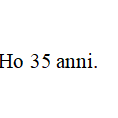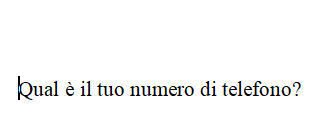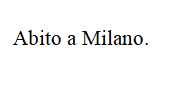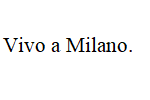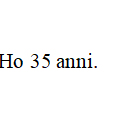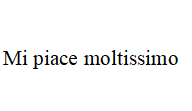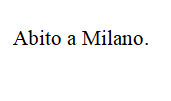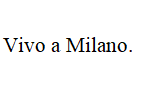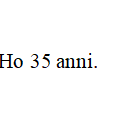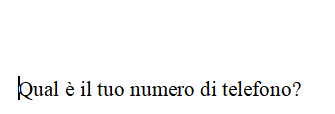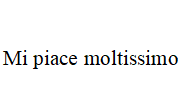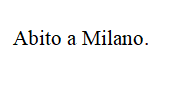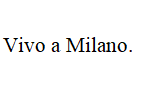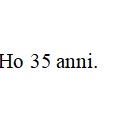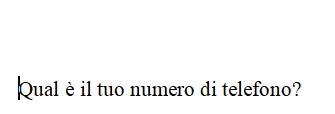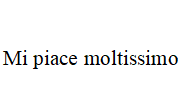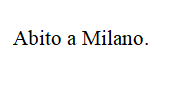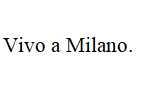Unità 1 : Piacere!
Learn Italian with our free online Italian course!
In the first unit of the beginners course A1.1 you will learn the basics of the Italian language. Learn your first sentences and expressions to communicate, your first vocabulary and grammar. In the Pausa Caffè section you’ll learn Italian regions and listen to the Italian song L’Italiano by Toto Cutugno.
Watch the Video Fumetto 1 video to review the themes of this unit through a cute story with Scotty and Bruno and meet all the characters of Italiano Bello! Test your knowledge with the final TEST 1!
LESSON
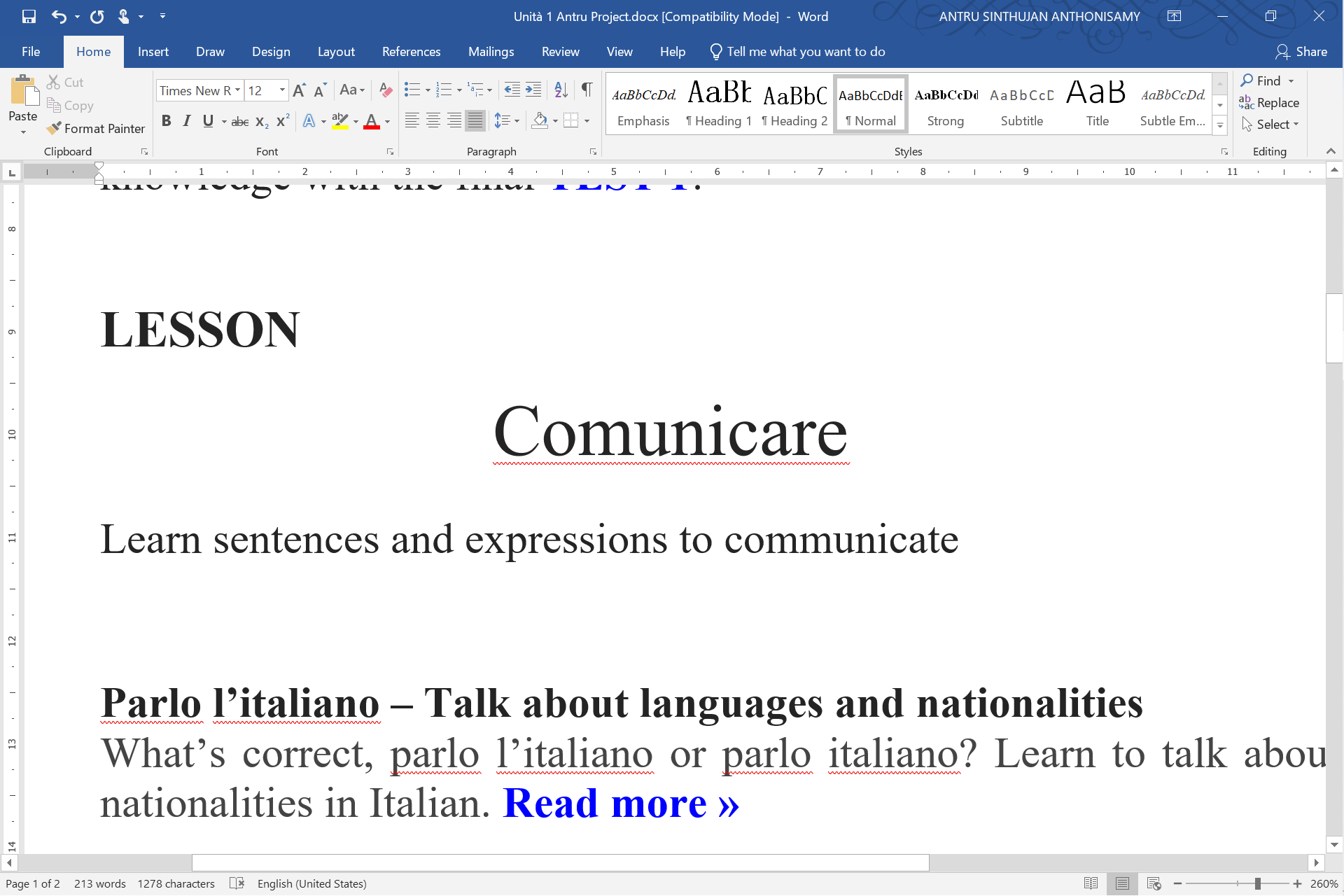
Learn sentences and expressions to communicate
Parlo l’italiano – Talk about languages and nationalities
What’s correct, parlo l’italiano or parlo italiano? Learn to talk about languages and nationalities in Italian.
Corso d'italiano A1.1, Unità 1
How many languages do you speak? Do you say parlo l’italiano or parlo italiano? What is your nationality? Let’s talk about languages and nationalities.
Dialogue
| Scotty, Where are you from? |
| I’m from Stockholm. |
| Ah, you’re Swedish! You speak Italian well. |
| Thank you! My dad is Swedish, my mom is Italian. |
| So you speak Swedish and Italian? |
Talking about languages
Parlo l’italiano or parlo italiano?
Che lingue parli?
Parlo l’italiano e l’inglese.
|
|
|
|
|
|
|
|
|
|
Talking about nationalities
Sei inglese?
No, sono spagnolo, di Madrid.
The word for the nationality is the same as the word for the language. But pay attention: you have to adapt the ending to gender (masculine/feminine) and number (singular/plural). The masculine plural is used for men or a mixed group of men and women. The feminine plural form is used only for women.
Nationalities in -o
Nationality words ending with -o like italiano, tedesco and spagnolo have 4 forms:
Singular | Plural | |
Masculine | italiano | italiani |
Feminine | italiana | italiane |
Nationalities in -e
Nationality words ending with -e like francese, inglese and svedese have only 2 forms that only distinguish singular and plural.
Singular | Plural | |
masculine / feminine | francese | francesi |
Say your age and phone number
Corso d'italiano A1.1, Unità 1
If you have already learned the numbers, you can now say your age and your phone number in Italian.
Say your age and phone number in Italian
Quanti anni hai?
In Italian, you use the verb avere to talk about your age. So in Italian actually you have years and you ask how many years one has.
|
|
| |
|
|
| |
|
|
Qual è il tuo numero di telefono?
The phone number is in Italian il numero di telefono. You can also differ between numero di casa home phone number and il numero di cellulare mobile phone number.
|
|
|
|
|
|
|
| |
| My home phone number is … | |
| My mobile phone number is … |
Qual è il Suo numero di telefono?
When you tell your phone number, you can group the numbers together or you can tell every single number, as you prefer.
|
|
347 1321190 |
|
Tu, Lei and voi: The polite form
Corso d'italiano A1.1, Unità 1
Ciao, come stai? If you are among friends you’ll use the Tu form, that is the informal form, but if you speak to an unknown person you should better use the Lei form, that is the polite form. You won’t be rude, don’t you? Learn the polite form in Italian!
Subject pronouns and the polite form
In Italian the feminine 3rd person singular lei she is the person used as polite form – regardless of whether the person you’re talking to is a man or a woman. The polite Lei is usually capitalized, but this is not a must.
If you speak to many people, there is not a special polite form: just use voi. You don’t need to capitalize it.
io | I | |
informal (sg.) | tu | informal you |
formal (sg.) | lui | lei | Lei | he | she | formal you |
noi | we | |
formal | informal (pl.) | voi | you all |
loro | they |
In the following table you can see how the formal and informal forms differ in Italian through the question Come stai? How are you?
ONE PERSON | MORE PERSONS | |
INFORMAL | Come stai? (tu) | Come state? (voi) |
FORMAL | Come sta? (Lei) | Come state? (voi) |
Alternative polite forms
Lei vs. Voi
Voi can be used as polite form to speak to a single person instead of Lei. This use of voi was very common in the past, but nowadays it has been substituted by Lei. Therefore, to use voi instead of Lei to speak to one person is quite old-fashioned, but sometimes you can still hear it.
Voi vs. Loro
Loro can be used as polite form to speak to many people instead of voi, but it’s extremely formal and almost exclusively confined to bureaucratic contexts.
Useful questions
Here you can find a few useful questions and expressions we have learned in this Unit 1 in their TU, LEI and VOI variants.
TU | LEI | VOI | |
Come stai? | Come sta? | Come state? | How are you? |
Come ti chiami? | Come si chiama? | Come vi chiamate? | What’s your name? |
Dove abiti? | Dove abita? | Dove abitate? | Where do you live? |
Di dove sei? | Di dov’è? | Di dove siete? | Where are you from? |
Sei inglese? | È inglese? | Siete inglesi? | Are you English? |
Quanti anni hai? | Quanti anni ha? | Quanti anni avete? | How old are you? |
Quali lingue parli? | Quali lingue parla? | Quali lingue parlate? | What languages do you speak? |
Mi piace! I like in Italian
Corso d'italiano A1.1, Unità 1
Mi piace l’Italia! To say I like in Italian you should use either mi piace or mi piacciono, depending on what follows. Learn the rule of mi piace and mi piacciono and how to have a small conversation about preferences.
Dialogue
| Scotty, do you like Italy? |
| Yes, I like it very much! I like the cities, the culture, the music, the cuisine,… |
|
|
|
|
|
|
I like in Italian
I like is mi piace or mi piacciono, depending on what follows. Let’s learn the rule:
Mi piace, mi piacciono
Mi piace l’Italia.
To say that you like something or doing something, you use mi piace.
+ singular noun | Mi piace l’Italia. | I like Italy. |
+ verb | Mi piace viaggiare. | I like traveling. |
+ list of verbs | Mi piace leggere e guardare la TV. | I like reading and watching TV. |
Mi piacciono le città italiane.
To say that you like many things, you use mi piacciono.
+ plural noun | Mi piacciono le città italiane. | I like Italian cities. |
+ list of nouns | Mi piacciono il gelato e la pizza. | I like ice-cream and pizza. |
If you don’t like something, you put non bevor mi.
| I don’t like doing sport. |
| I don’t like bananas. |
Mi piace molto
Mi piace molto la cucina italiana.
You can like something a lot or not at all. Look at the following possibilities:
| I like it very very much |
| I like it very much |
| I don’t like it very much |
| I don’t like it at all |
Ti piace?
If you directly ask if your conversation partner like something, you can ask your question as following:
Informal | Formal | Answer |
Ti piace viaggiare? | Le piace viaggiare? | Sì, mi piace. |
No, non mi piace. | ||
Ti piacciono le città italiane? | Le piacciono le città italiane? | Sì, mi piacciono. |
No, non mi piacciono. |
If you say that you like something and you want to ask if (s)he like it too, you should use the stressed pronouns a me / a te / a Lei instead of mi / ti / Le since you are doing a comparison. You use these pronouns also to say that you (don’t) like it too or that you, unlike your conversation partner, do or don’t like it.
Informal | Formal | SAME | DIFFERENT |
A me piace fare sport, e a te? | A me piace fare sport, e a Lei? | Anche a me | A me no |
A me non piace il caffè, e a te? | A me non piace il caffè, e a Lei? | Neanche a me | A me si |
Introduce yourself in Italian
Corso d'italiano A1.1, Unità 1
Introduce yourself in Italian: Learn your first sentences to introduce yourself in Italian. Your name, where you live, where you are from.
Introduce yourself in Italian
Dialog: Piacere!
| Hello! My name is Bruno, and yours? |
| My name is Scotty. Nice to meet you! |
| Where are you from? |
| I am from Stockholm. |
| Ah, you are Swedish! |
| Yes, but now I live in Italy, in San Candido. |
| I live in San Candido, too! |
Introduce yourself in Italian
Let’s learn to answer three simple questions in Italian: 1) What is your name? 2) Where do you live? 3) Where are you from?
1. Come ti chiami?
Come ti chiami?
Mi chiamo Scotty.
The verb you need in Italian to say your name is the reflexive verb chiamarsi (literally, “to call oneself”).
Another way is to introduce oneself with the verb essere, to be.
| My name is Scotty. |
| I’m Scotty. |
2. Dove abiti?
Dove abiti?
– Abito a Roma.
– Abito in Italia.
To tell where you live, use the verb abitare and the preposition A or IN for the city or the country, respectively.
| I live in Rom. |
| I live in Italy. |
If you live in a small town that your listener probably doesn’t know, you might say:
| I live in Caldaro, near Bolzano. |
| I live in a small village near Berlin. |
Instead of the verb abitare live, reside (where your house is), one could also use the verb vivere live (live in a general sense).
| I live/reside in Milan. |
| I live in Milan. |
3. Di dove sei?
Di dove sei?
Sono di Vienna.
To say where you are from, simply say your nationality or use the verb essere and the preposition DI followed by your hometown.
| I am Austrian (male / female). |
| I am from Vienna. |
| I come from Vienna, but I live in Munich now. |
With this expression you can’t say which is your home country, so you can’t say Sono di Austria. For that you just say your nationality or you use another expression, vengo dall’Austria. Learn this expression in our lesson Sono di, vengo da – Where are you from in Italian.
Buongiorno! Greetings in Italian
Corso d'italiano A1.1, Unità 1
What is the most important thing you should learn before you go to Italy? Of course to greet and say goodbye! You don’t want to be rude, do you? Learn useful greetings in Italian.
Greetings in Italian
1. Greeting formulas
Meeting greetings | Formality | When? | |
Ciao! | informal | anytime | Hi! Hello! |
Salve! | formal | anytime | Hello! |
Buon giorno! | formal | informal |
morning, afternoon,
| Good morning! | Hello! |
Buona sera! | formal | afternoon, evening | Good evening! |
Buona notte! | formal | informal | Night before bedtime | Good night! |
The time at which you start saying buona sera depends on the region. The further south, the earlier. In the north, for example, buona sera is heard from about 5 p.m., in the south already after lunch.
The buon greetings can be written as one word or separately: buongiorno or buon giorno; buonasera or buona sera; buonanotte or buona notte.
2. Nice to meet you
– Piacere, Valentina.
– Piacere, Federico.
Piacere is what you say when you meet someone for the first time, usually while shaking hands. You could also add a few words:
Piacere | formal | informal | It’s a pleasure |
Piacere di conoscerti | informell | Pleased to meet you. |
Piacere di conoscerla | formal | Pleased to meet you |
If you just met someone and then leave, you can say:
– È stato un piacere conoscerti.
– Anche per me!
| informal | It was a pleasure meeting you |
| formal | It was a pleasure meeting you |
| formal | informal | For me, too |
3. How are you?
– Ciao Emma, come stai?
– Bene, grazie! E tu?
There are a few ways to ask how someone is doing and respond. Let’s get to know some of the most common ones:
Come stai? | informal | How are you? |
Come sta? | formal | How are you? |
Come va? | formal | informal | How’s it going? |
Answers
Bene, grazie! | Good, thank you! |
Benissimo
| Very good |
Tutto a posto | Everything good |
Non male
| Not bad |
Così così | So so |
Male
| Bad
|
5. See you soon
– Ciao Emma, a presto!
– Ci vediamo!
When you say goodbye, you could also say something other than goodbye. Here you can find some common expressions:
Buona giornata! | Have a nice day! |
Buona serata! | Have a nice evening! |
A presto! | See you soon! |
A dopo!
| See you later! |
A domani! | See you tomorrow! |
Ci vediamo! | See you around! |
Answers
Grazie, altrettanto! | formal | informal | Thank you likewise! |
Grazie, anche a te! | informal | Thank you, you too! |
Grazie, anche a Lei! | formal | Thank you, you too! |
Essere and avere – To be and to have in Italian
Grammatica
The Italian verbs essere to be and avere to have are surely the most important verbs to know when you learn Italian. Italian essere and avere – to be and to have.
Italina essere and avere – to be and to have
Essere
io | sono | I am |
tu | sei | you are |
lui | lei | Lei | è | he | she is | you are (polite form) |
noi | siamo | we are |
voi | siete | you (all) are |
loro | sono | they are |
You use the verb essere for many things, for example to tell:
who you are | sono Jane | I’m Jane |
your nationality | sono inglese | I’m English |
your home town | sono di Londra | I’m from London |
your profession | sono una segretaria | I’m a secretary |
your mood | sono felice | triste | I’m happy | sad |
Avere
io | ho | I have |
tu | hai | you have |
lui | lei | Lei | ha | he | she has | you have (polite form) |
noi | abbiamo | we have |
voi | avete | you (all) have |
loro | hanno | they have |
You use the verb avere for many things, for example to tell:
your age | ho 30 anni | I’m 30 years old |
about things or animals you have | ho un cane | una casa | I’ve a dog | a house |
about your family | ho un figlio | una figlia | I’ve a son | a daughter |
expressions like be hungry or thirsty | ho fame | sete | I’m hungry | thirsty |
Definite articles
Corso d'italiano A1.1, Grammatica, Unità 1
Definite articles in Italian vary depending on gender (masculine and feminine), number (singular and plural) and the beginning letter of the following word. It may be sound a bit complicated, but you’ll surely learn the definite articles pretty quickly. Let’s learn together the rules of the definite article (it. l’articolo determinativo) in Italian!
Definite articles in Italian
The definite article is used – as in English – to refer back to something known or already mentioned. In Italian, nouns and articles have two genders, masculine and feminine, and they can be either singular or plural. For example, il cane the dog is masculine singular. For the definite articles it is also important to see which is the first letter of the following word. Have a look at the table with the rules. In il cane it is a consonant. Take a look at the table with the rules.
Masculine
The masculine has four articles: il and lo for the singular, i and gli for the plural. Bevor vowels, the o of lo is dropped, becoming l’.
Singular | Plural | ||
before consonant | il cane | i cani | dog |
before vowel | l’amico | gli amici | friend |
before s+consonant
| lo stivale
| gli stivali
| boot
|
Besides s+consonant and z, there are further peculiar cases: y (lo yogurt), x (lo xilofono), gn (lo gnomo), ps (lo psicologo).
Feminine
The feminine has two articles: la for the singular and le for the plural. The a of la is dropped before vowels, becoming l’.
Singular | Plural | ||
before consonant | la mucca | le mucche | cow |
before vowel | l’isola | le isole | island |
Masculine and feminine
Corso d'italiano A1.1, Grammatica, Unità 1
In Italian there are only two genders, masculine and feminine, and three nouns classes: O, A and E nouns, like gatto, casa and cane. Learn the Italian masculine and feminine, the three Italian noun classes and some exceptions like papa and foto.
Masculine and feminine in Italian
O and A nouns
The noun classes O and A are pretty straightforward: O nouns are masculine, like il libro or il gatto, A nouns are feminine, like la scuola or la casa.
O | il libro | book | masculine |
A | la scuola | school | feminine |
Here you can find some sample words for masculine and feminine words ending with O and A:
O – MASCULINE | A – FEMININE | ||
il gatto | cat | la luna | moon |
il topo | mouse | la stella | star |
il ragazzo | boy | la ragazza | girl |
il nonno | grandfather | la nonna | grandmother |
il tavolo | table | la sedia | chair |
l’albero | tree | la scuola | school |
il bosco | forest | la borsa | bag |
il pomeriggio | afternoon | la sera | evening |
il vicino | neighbor (man) | la vicina | neighbor (woman) |
Exceptions
masculine nouns ending with A
If there is a rule, there are also exceptions… In fact there are a few A nouns that are masculine, like:
- il problema problem
- il turista tourist
- l’autista driver
- il papà dad
- il papa pope
A dad and the pope are two very different people, so it’s important to distinguish them properly when speaking. Listen to the difference:
Feminine nouns ending with O
There are also O nouns that are feminine, like:
- la mano hand
- la foto photo
- la moto motorcycle
- l’auto car
- la radio radio
Except for the first one, the others are abbreviations of words actually ending with A: la fotografia, la motocicletta, l’automobile, la radiofonia.
E nouns
Besides O and A nouns, there are another noun class in Italian, that is the class of nouns ending with E. Unfortunately in this case you cannot tell if it is masculine or feminine just by looking at it! So you have to learn it by heart. In the following table you can find some useful words that end with E:
MASCULINE | FEMININE | ||
il padre | father | la madre | mother |
il fiore | flower | la volpe | fox |
il cane | dog | la carne | meat |
il pesce | fish | la notte | night |
il sole | sun | la tigre | tiger |
il giornale | newspaper | la luce | light |
il latte | milk | la soluzione | solution |
il pane | bread | la pelle | skin |
l’animale | animal | la neve | snow |
il bicchiere | glass | la nave | ship |
There are also some words that end with a consonant (usually foreign words), like il bar or il film, and they are usually masculine.
Italian subject pronouns
- Corso d'italiano A1.1, Grammatica, Unità 1
Italian subject pronouns. I pronomi soggetto.
What subject pronouns are there in Italian? Let’s get to know them.
Italian subject pronouns
As in English, the verbs are conjugated for different “persons”, e.g. I, you, he, etc. These persons are called subject pronouns and they stand for the subject, i.e. the person who performs the action. Italian has the following subject pronouns:
1st person singular | io | I |
2nd person singular | tu | you (one person) |
3rd person singular | lui, lei | he, she |
1st person plural | noi | we |
2nd person plural | voi | you (two or more people) |
3rd person plural | loro | they |
The subject pronouns are usually omitted in Italian, as you can tell from the verb which person is being referred to. However, if they are used, they emphasize the person, e.g. in introductions or juxtapositions:
- Abito a Berlino. I live in Berlin.
- Lui è Roberto, lei è Emma. He is Roberto, she is Emma.
Polite form
In Italian, the 3rd person singular Lei is used for formal address when speaking to one person, and the 2nd person plural Voi is used for addressing multiple people formally. When these pronouns are used for formal address, they are capitalized.
- E Lei, signor Rossi, dove abita?And you, Mr. Rossi, where do you live?
- E Voi, signori Rossi, dove abitate? And you, Mrs. and Mr. Rossi, where do you live?
one person | several persons | |
informal | tu | voi |
formal | Lei | Voi |
The 2nd person plural voi/Voi is therefore always used for several people, whether formal or informal. A distinction between formal and informal is only made in the singular between tu and Lei.
To deepen your understanding of the topic, read our article about the polite form.
The structure of Italian sentences
Corso d'italiano A1.1, Grammatica, Unità 1
Learn the basic structure of Italian sentences to make statements, yes/no questions, open questions and negative sentences.
Structure of Italian sentences
A basic Italian sentence has a SVO order, that is first the Subject, then the Verb and then the Object. In order to ask a simply yes/no question, you don’t need to modify this order. You just need a question mark or a question intonation. The order is changed if you ask an open question, where the question pronoun has to be placed first. In a negative sentence the negation word non is placed before the verb.
Look at the following examples with the sentence Bruno abita a Bolzano Bruno lives in Bolzano.
1 | 2 | 3 | ANSWER | ||
Statement | Bruno | abita | a Bolzano. | ||
Yes/No Question | Bruno | abita | a Bolzano? | – Sì/No. | |
Open Question | Dove | abita | Bruno? | – A Bolzano. | |
Negation | Bruno | non | abita | a Roma. |
No and non
No means no and it’s used as answer to yes/no question. Non is used to negate a verb and is placed before this.
Bruno abita a Roma? – No. | Does Bruno live in Rom? – No. |
Bruno non abita a Roma. | Bruno doesn’t live in Rom. |
Empty subject position
If your subject is represented by a pronoun, like io or noi, you don’t need to say it explicitly, so you can leave the subject position empty.
Ø | Abito | a Milano. | I live in Milan. | |
Ø | Non | abitiamo | a Berlino. | We don’t live in Berlin. |
You can learn more about subject pronouns in our lesson Italian subject pronouns.
If you want to know more about questions and questions pronouns in Italian, read our lesson Questions and questions pronouns.
Unità 1 : Piacere!
Learn Italian with our free online Italian course!
In the first unit of the beginners course A1.1 you will learn the basics of the Italian language. Learn your first sentences and expressions to communicate, your first vocabulary and grammar. In the Pausa Caffè section you’ll learn Italian regions and listen to the Italian song L’Italiano by Toto Cutugno.
Watch the Video Fumetto 1 video to review the themes of this unit through a cute story with Scotty and Bruno and meet all the characters of Italiano Bello! Test your knowledge with the final TEST 1!
LESSON 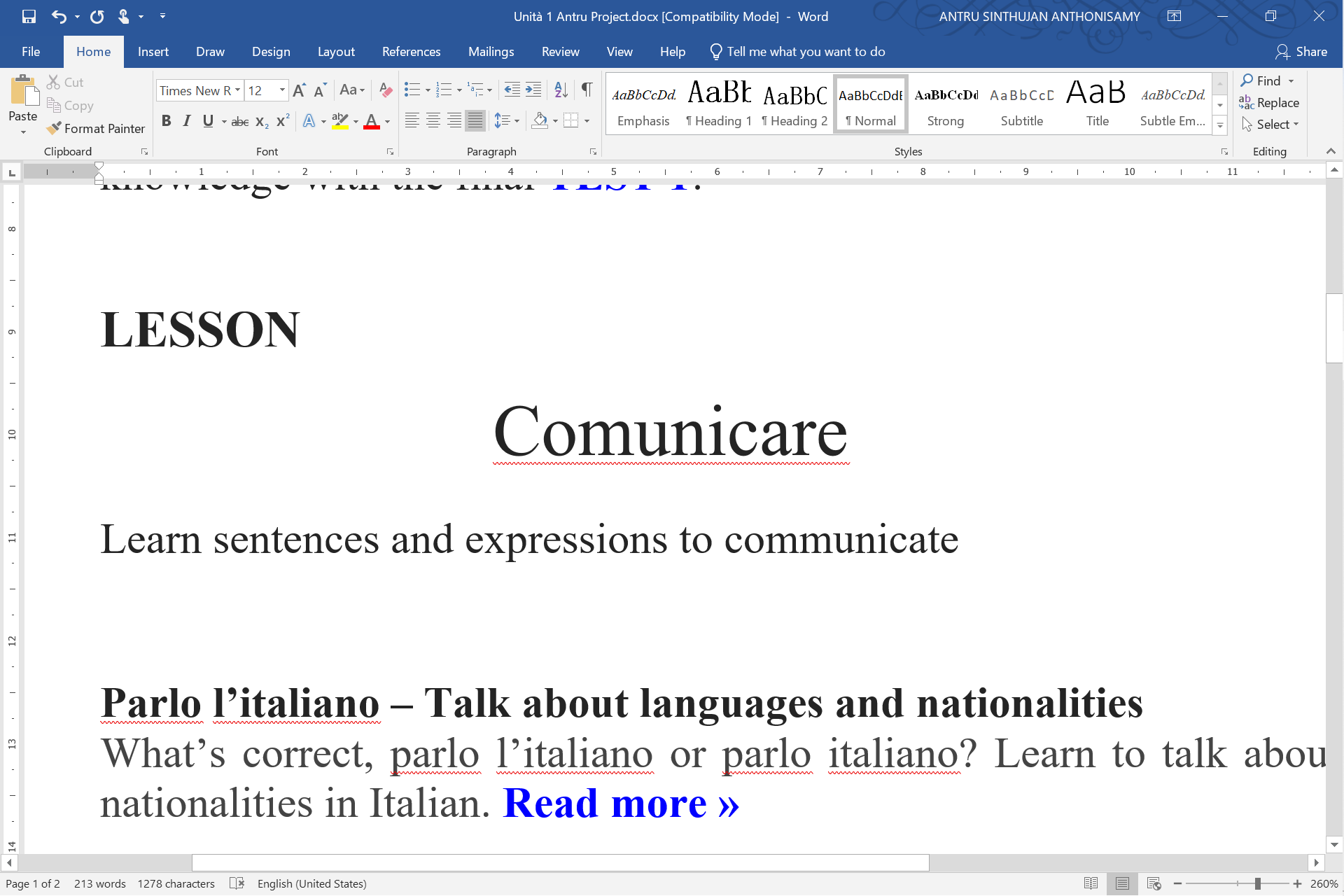
Learn sentences and expressions to communicate
Parlo l’italiano – Talk about languages and nationalities
What’s correct, parlo l’italiano or parlo italiano? Learn to talk about languages and nationalities in Italian.
Corso d'italiano A1.1, Unità 1
How many languages do you speak? Do you say parlo l’italiano or parlo italiano? What is your nationality? Let’s talk about languages and nationalities.
Dialogue
|
|
Scotty, Where are you from? |
|
|
I’m from Stockholm. |
|
|
Ah, you’re Swedish! You speak Italian well. |
|
|
Thank you! My dad is Swedish, my mom is Italian. |
|
|
So you speak Swedish and Italian? |
Talking about languages
Parlo l’italiano or parlo italiano?
Che lingue parli?
Parlo l’italiano e l’inglese.
|
|
|
|
|
|
|
|
|
|
|
|
|
|
|
Talking about nationalities
Sei inglese?
No, sono spagnolo, di Madrid.
The word for the nationality is the same as the word for the language. But pay attention: you have to adapt the ending to gender (masculine/feminine) and number (singular/plural). The masculine plural is used for men or a mixed group of men and women. The feminine plural form is used only for women.
Nationalities in -o
Nationality words ending with -o like italiano, tedesco and spagnolo have 4 forms:
|
Singular |
Plural |
|
|
Masculine |
italiano |
italiani |
|
Feminine |
italiana |
italiane |
Nationalities in -e
Nationality words ending with -e like francese, inglese and svedese have only 2 forms that only distinguish singular and plural.
|
Singular |
Plural |
|
|
masculine / feminine |
francese |
francesi |
Say your age and phone number
Corso d'italiano A1.1, Unità 1
If you have already learned the numbers, you can now say your age and your phone number in Italian.
Say your age and phone number in Italian
Quanti anni hai?
In Italian, you use the verb avere to talk about your age. So in Italian actually you have years and you ask how many years one has.
|
|
|
|
|
|
|
|
|
|
|
|
|
Qual è il tuo numero di telefono?
The phone number is in Italian il numero di telefono. You can also differ between numero di casa home phone number and il numero di cellulare mobile phone number.
|
|
|
|
|
|
|
|
|
|
|
|
|
|
My home phone number is … |
|
|
|
My mobile phone number is … |
Qual è il Suo numero di telefono?
When you tell your phone number, you can group the numbers together or you can tell every single number, as you prefer.
|
|
|
|
347 1321190 |
|
Tu, Lei and voi: The polite form
Corso d'italiano A1.1, Unità 1
Ciao, come stai? If you are among friends you’ll use the Tu form, that is the informal form, but if you speak to an unknown person you should better use the Lei form, that is the polite form. You won’t be rude, don’t you? Learn the polite form in Italian!
Subject pronouns and the polite form
In Italian the feminine 3rd person singular lei she is the person used as polite form – regardless of whether the person you’re talking to is a man or a woman. The polite Lei is usually capitalized, but this is not a must.
If you speak to many people, there is not a special polite form: just use voi. You don’t need to capitalize it.
|
io |
I |
|
|
informal (sg.) |
tu |
informal you |
|
formal (sg.) |
lui | lei | Lei |
he | she | formal you |
|
noi |
we |
|
|
formal | informal (pl.) |
voi |
you all |
|
loro |
they |
In the following table you can see how the formal and informal forms differ in Italian through the question Come stai? How are you?
|
ONE PERSON |
MORE PERSONS |
|
|
INFORMAL |
Come stai? (tu) |
Come state? (voi) |
|
FORMAL |
Come sta? (Lei) |
Come state? (voi) |
Alternative polite forms
Lei vs. Voi
Voi can be used as polite form to speak to a single person instead of Lei. This use of voi was very common in the past, but nowadays it has been substituted by Lei. Therefore, to use voi instead of Lei to speak to one person is quite old-fashioned, but sometimes you can still hear it.
Voi vs. Loro
Loro can be used as polite form to speak to many people instead of voi, but it’s extremely formal and almost exclusively confined to bureaucratic contexts.
Useful questions
Here you can find a few useful questions and expressions we have learned in this Unit 1 in their TU, LEI and VOI variants.
|
TU |
LEI |
VOI |
|
|
Come stai? |
Come sta? |
Come state? |
How are you? |
|
Come ti chiami? |
Come si chiama? |
Come vi chiamate? |
What’s your name? |
|
Dove abiti? |
Dove abita? |
Dove abitate? |
Where do you live? |
|
Di dove sei? |
Di dov’è? |
Di dove siete? |
Where are you from? |
|
Sei inglese? |
È inglese? |
Siete inglesi? |
Are you English? |
|
Quanti anni hai? |
Quanti anni ha? |
Quanti anni avete? |
How old are you? |
|
Quali lingue parli? |
Quali lingue parla? |
Quali lingue parlate? |
What languages do you speak? |
Mi piace! I like in Italian
Corso d'italiano A1.1, Unità 1
Mi piace l’Italia! To say I like in Italian you should use either mi piace or mi piacciono, depending on what follows. Learn the rule of mi piace and mi piacciono and how to have a small conversation about preferences.
Dialogue
|
|
Scotty, do you like Italy? |
|
|
Yes, I like it very much! I like the cities, the culture, the music, the cuisine,… |
|
|
|
|
|
|
|
|
|
I like in Italian
I like is mi piace or mi piacciono, depending on what follows. Let’s learn the rule:
Mi piace, mi piacciono
Mi piace l’Italia.
To say that you like something or doing something, you use mi piace.
|
+ singular noun |
Mi piace l’Italia. |
I like Italy. |
|
+ verb |
Mi piace viaggiare. |
I like traveling. |
|
+ list of verbs |
Mi piace leggere e guardare la TV. |
I like reading and watching TV. |
Mi piacciono le città italiane.
To say that you like many things, you use mi piacciono.
|
+ plural noun |
Mi piacciono le città italiane. |
I like Italian cities. |
|
+ list of nouns |
Mi piacciono il gelato e la pizza. |
I like ice-cream and pizza. |
If you don’t like something, you put non bevor mi.
|
|
I don’t like doing sport. |
|
|
I don’t like bananas. |
Mi piace molto
Mi piace molto la cucina italiana.
You can like something a lot or not at all. Look at the following possibilities:
|
|
I like it very very much |
|
|
I like it very much |
|
|
I don’t like it very much |
|
|
I don’t like it at all |
Ti piace?
If you directly ask if your conversation partner like something, you can ask your question as following:
|
Informal |
Formal |
Answer |
|
Ti piace viaggiare? |
Le piace viaggiare? |
Sì, mi piace. |
|
No, non mi piace. |
||
|
Ti piacciono le città italiane? |
Le piacciono le città italiane? |
Sì, mi piacciono. |
|
No, non mi piacciono. |
If you say that you like something and you want to ask if (s)he like it too, you should use the stressed pronouns a me / a te / a Lei instead of mi / ti / Le since you are doing a comparison. You use these pronouns also to say that you (don’t) like it too or that you, unlike your conversation partner, do or don’t like it.
|
Informal |
Formal |
SAME |
DIFFERENT |
|
A me piace fare sport, e a te? |
A me piace fare sport, e a Lei? |
Anche a me |
A me no |
|
A me non piace il caffè, e a te? |
A me non piace il caffè, e a Lei? |
Neanche a me |
A me si |
Introduce yourself in Italian
Corso d'italiano A1.1, Unità 1
Introduce yourself in Italian: Learn your first sentences to introduce yourself in Italian. Your name, where you live, where you are from.
Introduce yourself in Italian
Dialog: Piacere!
|
|
Hello! My name is Bruno, and yours? |
|
|
My name is Scotty. Nice to meet you! |
|
|
Where are you from? |
|
|
I am from Stockholm. |
|
|
Ah, you are Swedish! |
|
|
Yes, but now I live in Italy, in San Candido. |
|
|
I live in San Candido, too! |
Introduce yourself in Italian
Let’s learn to answer three simple questions in Italian: 1) What is your name? 2) Where do you live? 3) Where are you from?
1. Come ti chiami?
Come ti chiami?
Mi chiamo Scotty.
The verb you need in Italian to say your name is the reflexive verb chiamarsi (literally, “to call oneself”).
Another way is to introduce oneself with the verb essere, to be.
|
|
My name is Scotty. |
|
|
I’m Scotty. |
2. Dove abiti?
Dove abiti?
– Abito a Roma.
– Abito in Italia.
To tell where you live, use the verb abitare and the preposition A or IN for the city or the country, respectively.
|
|
I live in Rom. |
|
|
I live in Italy. |
If you live in a small town that your listener probably doesn’t know, you might say:
|
|
I live in Caldaro, near Bolzano. |
|
|
I live in a small village near Berlin. |
Instead of the verb abitare live, reside (where your house is), one could also use the verb vivere live (live in a general sense).
|
|
I live/reside in Milan. |
|
|
I live in Milan. |
3. Di dove sei?
Di dove sei?
Sono di Vienna.
To say where you are from, simply say your nationality or use the verb essere and the preposition DI followed by your hometown.
|
|
I am Austrian (male / female). |
|
|
I am from Vienna. |
|
|
I come from Vienna, but I live in Munich now. |
With this expression you can’t say which is your home country, so you can’t say Sono di Austria. For that you just say your nationality or you use another expression, vengo dall’Austria. Learn this expression in our lesson Sono di, vengo da – Where are you from in Italian.
Buongiorno! Greetings in Italian
Corso d'italiano A1.1, Unità 1
What is the most important thing you should learn before you go to Italy? Of course to greet and say goodbye! You don’t want to be rude, do you? Learn useful greetings in Italian.
Greetings in Italian
1. Greeting formulas
|
Meeting greetings |
Formality |
When? |
|
|
Ciao! |
informal |
anytime |
Hi! Hello! |
|
Salve! |
formal |
anytime |
Hello! |
|
Buon giorno! |
formal | informal |
morning, afternoon, |
Good morning! | Hello! |
|
Buona sera! |
formal |
afternoon, evening |
Good evening! |
|
Buona notte! |
formal | informal |
Night before bedtime |
Good night! |
The time at which you start saying buona sera depends on the region. The further south, the earlier. In the north, for example, buona sera is heard from about 5 p.m., in the south already after lunch.
The buon greetings can be written as one word or separately: buongiorno or buon giorno; buonasera or buona sera; buonanotte or buona notte.
2. Nice to meet you
– Piacere, Valentina.
– Piacere, Federico.
Piacere is what you say when you meet someone for the first time, usually while shaking hands. You could also add a few words:
|
Piacere |
formal | informal |
It’s a pleasure |
|
Piacere di conoscerti |
informell |
Pleased to meet you. |
|
Piacere di conoscerla |
formal |
Pleased to meet you |
If you just met someone and then leave, you can say:
– È stato un piacere conoscerti.
– Anche per me!
|
|
informal |
It was a pleasure meeting you |
|
|
formal |
It was a pleasure meeting you |
|
|
formal | informal |
For me, too |
3. How are you?
– Ciao Emma, come stai?
– Bene, grazie! E tu?
There are a few ways to ask how someone is doing and respond. Let’s get to know some of the most common ones:
|
Come stai? |
informal |
How are you? |
|
Come sta? |
formal |
How are you? |
|
Come va? |
formal | informal |
How’s it going? |
Answers
|
Bene, grazie! |
Good, thank you! |
|
Benissimo |
Very good |
|
Tutto a posto |
Everything good |
|
Non male |
Not bad |
|
Così così |
So so |
|
Male |
Bad |
5. See you soon
– Ciao Emma, a presto!
– Ci vediamo!
When you say goodbye, you could also say something other than goodbye. Here you can find some common expressions:
|
Buona giornata! |
Have a nice day! |
|
Buona serata! |
Have a nice evening! |
|
A presto! |
See you soon! |
|
A dopo! |
See you later! |
|
A domani! |
See you tomorrow! |
|
Ci vediamo! |
See you around! |
Answers
|
Grazie, altrettanto! |
formal | informal |
Thank you likewise! |
|
Grazie, anche a te! |
informal |
Thank you, you too! |
|
Grazie, anche a Lei! |
formal |
Thank you, you too! |
Essere and avere – To be and to have in Italian
Grammatica
The Italian verbs essere to be and avere to have are surely the most important verbs to know when you learn Italian. Italian essere and avere – to be and to have.
Italina essere and avere – to be and to have
Essere
|
io |
sono |
I am |
|
tu |
sei |
you are |
|
lui | lei | Lei |
è |
he | she is | you are (polite form) |
|
noi |
siamo |
we are |
|
voi |
siete |
you (all) are |
|
loro |
sono |
they are |
You use the verb essere for many things, for example to tell:
|
who you are |
sono Jane |
I’m Jane |
|
your nationality |
sono inglese |
I’m English |
|
your home town |
sono di Londra |
I’m from London |
|
your profession |
sono una segretaria |
I’m a secretary |
|
your mood |
sono felice | triste |
I’m happy | sad |
Avere
|
io |
ho |
I have |
|
tu |
hai |
you have |
|
lui | lei | Lei |
ha |
he | she has | you have (polite form) |
|
noi |
abbiamo |
we have |
|
voi |
avete |
you (all) have |
|
loro |
hanno |
they have |
You use the verb avere for many things, for example to tell:
|
your age |
ho 30 anni |
I’m 30 years old |
|
about things or animals you have |
ho un cane | una casa |
I’ve a dog | a house |
|
about your family |
ho un figlio | una figlia |
I’ve a son | a daughter |
|
expressions like be hungry or thirsty |
ho fame | sete |
I’m hungry | thirsty |
Definite articles
Corso d'italiano A1.1, Grammatica, Unità 1
Definite articles in Italian vary depending on gender (masculine and feminine), number (singular and plural) and the beginning letter of the following word. It may be sound a bit complicated, but you’ll surely learn the definite articles pretty quickly. Let’s learn together the rules of the definite article (it. l’articolo determinativo) in Italian!
Definite articles in Italian
The definite article is used – as in English – to refer back to something known or already mentioned. In Italian, nouns and articles have two genders, masculine and feminine, and they can be either singular or plural. For example, il cane the dog is masculine singular. For the definite articles it is also important to see which is the first letter of the following word. Have a look at the table with the rules. In il cane it is a consonant. Take a look at the table with the rules.
Masculine
The masculine has four articles: il and lo for the singular, i and gli for the plural. Bevor vowels, the o of lo is dropped, becoming l’.
|
Singular |
Plural |
||
|
before consonant |
il cane |
i cani |
dog |
|
before vowel |
l’amico |
gli amici |
friend |
|
before s+consonant |
lo stivale |
gli stivali |
boot |
Besides s+consonant and z, there are further peculiar cases: y (lo yogurt), x (lo xilofono), gn (lo gnomo), ps (lo psicologo).
Feminine
The feminine has two articles: la for the singular and le for the plural. The a of la is dropped before vowels, becoming l’.
|
Singular |
Plural |
||
|
before consonant |
la mucca |
le mucche |
cow |
|
before vowel |
l’isola |
le isole |
island |
Masculine and feminine
Corso d'italiano A1.1, Grammatica, Unità 1
In Italian there are only two genders, masculine and feminine, and three nouns classes: O, A and E nouns, like gatto, casa and cane. Learn the Italian masculine and feminine, the three Italian noun classes and some exceptions like papa and foto.
Masculine and feminine in Italian
O and A nouns
The noun classes O and A are pretty straightforward: O nouns are masculine, like il libro or il gatto, A nouns are feminine, like la scuola or la casa.
|
O |
il libro |
book |
masculine |
|
A |
la scuola |
school |
feminine |
Here you can find some sample words for masculine and feminine words ending with O and A:
|
O – MASCULINE |
A – FEMININE |
||
|
il gatto |
cat |
la luna |
moon |
|
il topo |
mouse |
la stella |
star |
|
il ragazzo |
boy |
la ragazza |
girl |
|
il nonno |
grandfather |
la nonna |
grandmother |
|
il tavolo |
table |
la sedia |
chair |
|
l’albero |
tree |
la scuola |
school |
|
il bosco |
forest |
la borsa |
bag |
|
il pomeriggio |
afternoon |
la sera |
evening |
|
il vicino |
neighbor (man) |
la vicina |
neighbor (woman) |
Exceptions
masculine nouns ending with A
If there is a rule, there are also exceptions… In fact there are a few A nouns that are masculine, like:
- il problema problem
- il turista tourist
- l’autista driver
- il papà dad
- il papa pope
A dad and the pope are two very different people, so it’s important to distinguish them properly when speaking. Listen to the difference:
Feminine nouns ending with O
There are also O nouns that are feminine, like:
- la mano hand
- la foto photo
- la moto motorcycle
- l’auto car
- la radio radio
Except for the first one, the others are abbreviations of words actually ending with A: la fotografia, la motocicletta, l’automobile, la radiofonia.
E nouns
Besides O and A nouns, there are another noun class in Italian, that is the class of nouns ending with E. Unfortunately in this case you cannot tell if it is masculine or feminine just by looking at it! So you have to learn it by heart. In the following table you can find some useful words that end with E:
|
MASCULINE |
FEMININE |
||
|
il padre |
father |
la madre |
mother |
|
il fiore |
flower |
la volpe |
fox |
|
il cane |
dog |
la carne |
meat |
|
il pesce |
fish |
la notte |
night |
|
il sole |
sun |
la tigre |
tiger |
|
il giornale |
newspaper |
la luce |
light |
|
il latte |
milk |
la soluzione |
solution |
|
il pane |
bread |
la pelle |
skin |
|
l’animale |
animal |
la neve |
snow |
|
il bicchiere |
glass |
la nave |
ship |
There are also some words that end with a consonant (usually foreign words), like il bar or il film, and they are usually masculine.
Italian subject pronouns
- Corso d'italiano A1.1, Grammatica, Unità 1
Italian subject pronouns. I pronomi soggetto.
What subject pronouns are there in Italian? Let’s get to know them.
Italian subject pronouns
As in English, the verbs are conjugated for different “persons”, e.g. I, you, he, etc. These persons are called subject pronouns and they stand for the subject, i.e. the person who performs the action. Italian has the following subject pronouns:
|
1st person singular |
io |
I |
|
2nd person singular |
tu |
you (one person) |
|
3rd person singular |
lui, lei |
he, she |
|
1st person plural |
noi |
we |
|
2nd person plural |
voi |
you (two or more people) |
|
3rd person plural |
loro |
they |
The subject pronouns are usually omitted in Italian, as you can tell from the verb which person is being referred to. However, if they are used, they emphasize the person, e.g. in introductions or juxtapositions:
- Abito a Berlino. I live in Berlin.
- Lui è Roberto, lei è Emma. He is Roberto, she is Emma.
Polite form
In Italian, the 3rd person singular Lei is used for formal address when speaking to one person, and the 2nd person plural Voi is used for addressing multiple people formally. When these pronouns are used for formal address, they are capitalized.
- E Lei, signor Rossi, dove abita?And you, Mr. Rossi, where do you live?
- E Voi, signori Rossi, dove abitate? And you, Mrs. and Mr. Rossi, where do you live?
|
one person |
several persons |
|
|
informal |
tu |
voi |
|
formal |
Lei |
Voi |
The 2nd person plural voi/Voi is therefore always used for several people, whether formal or informal. A distinction between formal and informal is only made in the singular between tu and Lei.
To deepen your understanding of the topic, read our article about the polite form.
The structure of Italian sentences
Corso d'italiano A1.1, Grammatica, Unità 1
Learn the basic structure of Italian sentences to make statements, yes/no questions, open questions and negative sentences.
Structure of Italian sentences
A basic Italian sentence has a SVO order, that is first the Subject, then the Verb and then the Object. In order to ask a simply yes/no question, you don’t need to modify this order. You just need a question mark or a question intonation. The order is changed if you ask an open question, where the question pronoun has to be placed first. In a negative sentence the negation word non is placed before the verb.
Look at the following examples with the sentence Bruno abita a Bolzano Bruno lives in Bolzano.
|
1 |
2 |
3 |
ANSWER |
||
|
Statement |
Bruno |
abita |
a Bolzano. |
||
|
Yes/No Question |
Bruno |
abita |
a Bolzano? |
– Sì/No. |
|
|
Open Question |
Dove |
abita |
Bruno? |
– A Bolzano. |
|
|
Negation |
Bruno |
non |
abita |
a Roma. |
No and non
No means no and it’s used as answer to yes/no question. Non is used to negate a verb and is placed before this.
|
Bruno abita a Roma? – No. |
Does Bruno live in Rom? – No. |
|
Bruno non abita a Roma. |
Bruno doesn’t live in Rom. |
Empty subject position
If your subject is represented by a pronoun, like io or noi, you don’t need to say it explicitly, so you can leave the subject position empty.
|
Ø |
Abito |
a Milano. |
I live in Milan. |
|
|
Ø |
Non |
abitiamo |
a Berlino. |
We don’t live in Berlin. |
You can learn more about subject pronouns in our lesson Italian subject pronouns.
If you want to know more about questions and questions pronouns in Italian, read our lesson Questions and questions pronouns.
Unità 1 : Piacere!
Learn Italian with our free online Italian course!
In the first unit of the beginners course A1.1 you will learn the basics of the Italian language. Learn your first sentences and expressions to communicate, your first vocabulary and grammar. In the Pausa Caffè section you’ll learn Italian regions and listen to the Italian song L’Italiano by Toto Cutugno.
Watch the Video Fumetto 1 video to review the themes of this unit through a cute story with Scotty and Bruno and meet all the characters of Italiano Bello! Test your knowledge with the final TEST 1!
LESSON 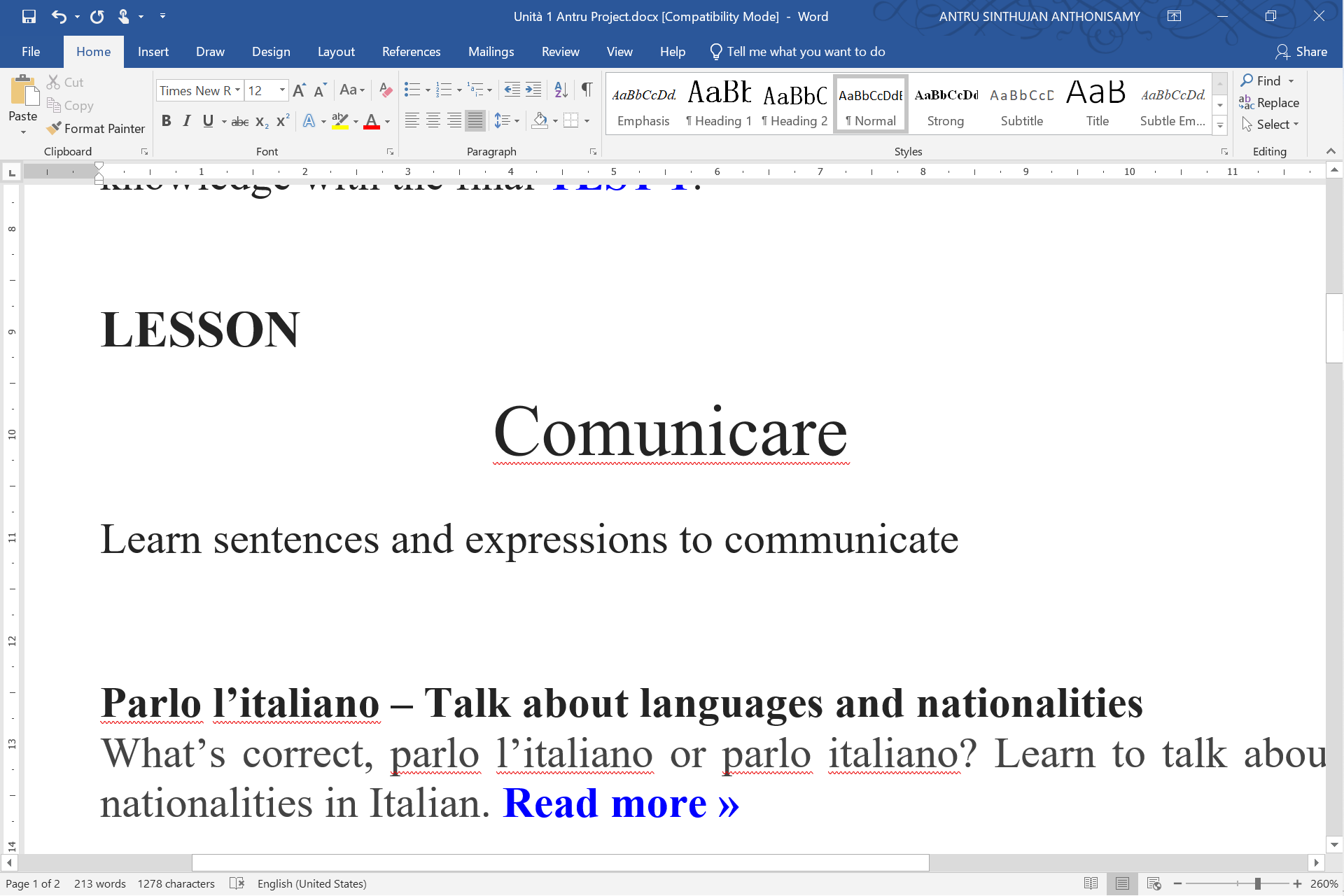
Learn sentences and expressions to communicate
Parlo l’italiano – Talk about languages and nationalities
What’s correct, parlo l’italiano or parlo italiano? Learn to talk about languages and nationalities in Italian.
Corso d'italiano A1.1, Unità 1
How many languages do you speak? Do you say parlo l’italiano or parlo italiano? What is your nationality? Let’s talk about languages and nationalities.
Dialogue
|
|
Scotty, Where are you from? |
|
|
I’m from Stockholm. |
|
|
Ah, you’re Swedish! You speak Italian well. |
|
|
Thank you! My dad is Swedish, my mom is Italian. |
|
|
So you speak Swedish and Italian? |
Talking about languages
Parlo l’italiano or parlo italiano?
Che lingue parli?
Parlo l’italiano e l’inglese.
|
|
|
|
|
|
|
|
|
|
|
|
|
|
|
Talking about nationalities
Sei inglese?
No, sono spagnolo, di Madrid.
The word for the nationality is the same as the word for the language. But pay attention: you have to adapt the ending to gender (masculine/feminine) and number (singular/plural). The masculine plural is used for men or a mixed group of men and women. The feminine plural form is used only for women.
Nationalities in -o
Nationality words ending with -o like italiano, tedesco and spagnolo have 4 forms:
|
Singular |
Plural |
|
|
Masculine |
italiano |
italiani |
|
Feminine |
italiana |
italiane |
Nationalities in -e
Nationality words ending with -e like francese, inglese and svedese have only 2 forms that only distinguish singular and plural.
|
Singular |
Plural |
|
|
masculine / feminine |
francese |
francesi |
Say your age and phone number
Corso d'italiano A1.1, Unità 1
If you have already learned the numbers, you can now say your age and your phone number in Italian.
Say your age and phone number in Italian
Quanti anni hai?
In Italian, you use the verb avere to talk about your age. So in Italian actually you have years and you ask how many years one has.
|
|
|
|
|
|
|
|
|
|
|
|
|
Qual è il tuo numero di telefono?
The phone number is in Italian il numero di telefono. You can also differ between numero di casa home phone number and il numero di cellulare mobile phone number.
|
|
|
|
|
|
|
|
|
|
|
|
|
|
My home phone number is … |
|
|
|
My mobile phone number is … |
Qual è il Suo numero di telefono?
When you tell your phone number, you can group the numbers together or you can tell every single number, as you prefer.
|
|
|
|
347 1321190 |
|
Tu, Lei and voi: The polite form
Corso d'italiano A1.1, Unità 1
Ciao, come stai? If you are among friends you’ll use the Tu form, that is the informal form, but if you speak to an unknown person you should better use the Lei form, that is the polite form. You won’t be rude, don’t you? Learn the polite form in Italian!
Subject pronouns and the polite form
In Italian the feminine 3rd person singular lei she is the person used as polite form – regardless of whether the person you’re talking to is a man or a woman. The polite Lei is usually capitalized, but this is not a must.
If you speak to many people, there is not a special polite form: just use voi. You don’t need to capitalize it.
|
io |
I |
|
|
informal (sg.) |
tu |
informal you |
|
formal (sg.) |
lui | lei | Lei |
he | she | formal you |
|
noi |
we |
|
|
formal | informal (pl.) |
voi |
you all |
|
loro |
they |
In the following table you can see how the formal and informal forms differ in Italian through the question Come stai? How are you?
|
ONE PERSON |
MORE PERSONS |
|
|
INFORMAL |
Come stai? (tu) |
Come state? (voi) |
|
FORMAL |
Come sta? (Lei) |
Come state? (voi) |
Alternative polite forms
Lei vs. Voi
Voi can be used as polite form to speak to a single person instead of Lei. This use of voi was very common in the past, but nowadays it has been substituted by Lei. Therefore, to use voi instead of Lei to speak to one person is quite old-fashioned, but sometimes you can still hear it.
Voi vs. Loro
Loro can be used as polite form to speak to many people instead of voi, but it’s extremely formal and almost exclusively confined to bureaucratic contexts.
Useful questions
Here you can find a few useful questions and expressions we have learned in this Unit 1 in their TU, LEI and VOI variants.
|
TU |
LEI |
VOI |
|
|
Come stai? |
Come sta? |
Come state? |
How are you? |
|
Come ti chiami? |
Come si chiama? |
Come vi chiamate? |
What’s your name? |
|
Dove abiti? |
Dove abita? |
Dove abitate? |
Where do you live? |
|
Di dove sei? |
Di dov’è? |
Di dove siete? |
Where are you from? |
|
Sei inglese? |
È inglese? |
Siete inglesi? |
Are you English? |
|
Quanti anni hai? |
Quanti anni ha? |
Quanti anni avete? |
How old are you? |
|
Quali lingue parli? |
Quali lingue parla? |
Quali lingue parlate? |
What languages do you speak? |
Mi piace! I like in Italian
Corso d'italiano A1.1, Unità 1
Mi piace l’Italia! To say I like in Italian you should use either mi piace or mi piacciono, depending on what follows. Learn the rule of mi piace and mi piacciono and how to have a small conversation about preferences.
Dialogue
|
|
Scotty, do you like Italy? |
|
|
Yes, I like it very much! I like the cities, the culture, the music, the cuisine,… |
|
|
|
|
|
|
|
|
|
I like in Italian
I like is mi piace or mi piacciono, depending on what follows. Let’s learn the rule:
Mi piace, mi piacciono
Mi piace l’Italia.
To say that you like something or doing something, you use mi piace.
|
+ singular noun |
Mi piace l’Italia. |
I like Italy. |
|
+ verb |
Mi piace viaggiare. |
I like traveling. |
|
+ list of verbs |
Mi piace leggere e guardare la TV. |
I like reading and watching TV. |
Mi piacciono le città italiane.
To say that you like many things, you use mi piacciono.
|
+ plural noun |
Mi piacciono le città italiane. |
I like Italian cities. |
|
+ list of nouns |
Mi piacciono il gelato e la pizza. |
I like ice-cream and pizza. |
If you don’t like something, you put non bevor mi.
|
|
I don’t like doing sport. |
|
|
I don’t like bananas. |
Mi piace molto
Mi piace molto la cucina italiana.
You can like something a lot or not at all. Look at the following possibilities:
|
|
I like it very very much |
|
|
I like it very much |
|
|
I don’t like it very much |
|
|
I don’t like it at all |
Ti piace?
If you directly ask if your conversation partner like something, you can ask your question as following:
|
Informal |
Formal |
Answer |
|
Ti piace viaggiare? |
Le piace viaggiare? |
Sì, mi piace. |
|
No, non mi piace. |
||
|
Ti piacciono le città italiane? |
Le piacciono le città italiane? |
Sì, mi piacciono. |
|
No, non mi piacciono. |
If you say that you like something and you want to ask if (s)he like it too, you should use the stressed pronouns a me / a te / a Lei instead of mi / ti / Le since you are doing a comparison. You use these pronouns also to say that you (don’t) like it too or that you, unlike your conversation partner, do or don’t like it.
|
Informal |
Formal |
SAME |
DIFFERENT |
|
A me piace fare sport, e a te? |
A me piace fare sport, e a Lei? |
Anche a me |
A me no |
|
A me non piace il caffè, e a te? |
A me non piace il caffè, e a Lei? |
Neanche a me |
A me si |
Introduce yourself in Italian
Corso d'italiano A1.1, Unità 1
Introduce yourself in Italian: Learn your first sentences to introduce yourself in Italian. Your name, where you live, where you are from.
Introduce yourself in Italian
Dialog: Piacere!
|
|
Hello! My name is Bruno, and yours? |
|
|
My name is Scotty. Nice to meet you! |
|
|
Where are you from? |
|
|
I am from Stockholm. |
|
|
Ah, you are Swedish! |
|
|
Yes, but now I live in Italy, in San Candido. |
|
|
I live in San Candido, too! |
Introduce yourself in Italian
Let’s learn to answer three simple questions in Italian: 1) What is your name? 2) Where do you live? 3) Where are you from?
1. Come ti chiami?
Come ti chiami?
Mi chiamo Scotty.
The verb you need in Italian to say your name is the reflexive verb chiamarsi (literally, “to call oneself”).
Another way is to introduce oneself with the verb essere, to be.
|
|
My name is Scotty. |
|
|
I’m Scotty. |
2. Dove abiti?
Dove abiti?
– Abito a Roma.
– Abito in Italia.
To tell where you live, use the verb abitare and the preposition A or IN for the city or the country, respectively.
|
|
I live in Rom. |
|
|
I live in Italy. |
If you live in a small town that your listener probably doesn’t know, you might say:
|
|
I live in Caldaro, near Bolzano. |
|
|
I live in a small village near Berlin. |
Instead of the verb abitare live, reside (where your house is), one could also use the verb vivere live (live in a general sense).
|
|
I live/reside in Milan. |
|
|
I live in Milan. |
3. Di dove sei?
Di dove sei?
Sono di Vienna.
To say where you are from, simply say your nationality or use the verb essere and the preposition DI followed by your hometown.
|
|
I am Austrian (male / female). |
|
|
I am from Vienna. |
|
|
I come from Vienna, but I live in Munich now. |
With this expression you can’t say which is your home country, so you can’t say Sono di Austria. For that you just say your nationality or you use another expression, vengo dall’Austria. Learn this expression in our lesson Sono di, vengo da – Where are you from in Italian.
Buongiorno! Greetings in Italian
Corso d'italiano A1.1, Unità 1
What is the most important thing you should learn before you go to Italy? Of course to greet and say goodbye! You don’t want to be rude, do you? Learn useful greetings in Italian.
Greetings in Italian
1. Greeting formulas
|
Meeting greetings |
Formality |
When? |
|
|
Ciao! |
informal |
anytime |
Hi! Hello! |
|
Salve! |
formal |
anytime |
Hello! |
|
Buon giorno! |
formal | informal |
morning, afternoon, |
Good morning! | Hello! |
|
Buona sera! |
formal |
afternoon, evening |
Good evening! |
|
Buona notte! |
formal | informal |
Night before bedtime |
Good night! |
The time at which you start saying buona sera depends on the region. The further south, the earlier. In the north, for example, buona sera is heard from about 5 p.m., in the south already after lunch.
The buon greetings can be written as one word or separately: buongiorno or buon giorno; buonasera or buona sera; buonanotte or buona notte.
2. Nice to meet you
– Piacere, Valentina.
– Piacere, Federico.
Piacere is what you say when you meet someone for the first time, usually while shaking hands. You could also add a few words:
|
Piacere |
formal | informal |
It’s a pleasure |
|
Piacere di conoscerti |
informell |
Pleased to meet you. |
|
Piacere di conoscerla |
formal |
Pleased to meet you |
If you just met someone and then leave, you can say:
– È stato un piacere conoscerti.
– Anche per me!
|
|
informal |
It was a pleasure meeting you |
|
|
formal |
It was a pleasure meeting you |
|
|
formal | informal |
For me, too |
3. How are you?
– Ciao Emma, come stai?
– Bene, grazie! E tu?
There are a few ways to ask how someone is doing and respond. Let’s get to know some of the most common ones:
|
Come stai? |
informal |
How are you? |
|
Come sta? |
formal |
How are you? |
|
Come va? |
formal | informal |
How’s it going? |
Answers
|
Bene, grazie! |
Good, thank you! |
|
Benissimo |
Very good |
|
Tutto a posto |
Everything good |
|
Non male |
Not bad |
|
Così così |
So so |
|
Male |
Bad |
5. See you soon
– Ciao Emma, a presto!
– Ci vediamo!
When you say goodbye, you could also say something other than goodbye. Here you can find some common expressions:
|
Buona giornata! |
Have a nice day! |
|
Buona serata! |
Have a nice evening! |
|
A presto! |
See you soon! |
|
A dopo! |
See you later! |
|
A domani! |
See you tomorrow! |
|
Ci vediamo! |
See you around! |
Answers
|
Grazie, altrettanto! |
formal | informal |
Thank you likewise! |
|
Grazie, anche a te! |
informal |
Thank you, you too! |
|
Grazie, anche a Lei! |
formal |
Thank you, you too! |
Essere and avere – To be and to have in Italian
Grammatica
The Italian verbs essere to be and avere to have are surely the most important verbs to know when you learn Italian. Italian essere and avere – to be and to have.
Italina essere and avere – to be and to have
Essere
|
io |
sono |
I am |
|
tu |
sei |
you are |
|
lui | lei | Lei |
è |
he | she is | you are (polite form) |
|
noi |
siamo |
we are |
|
voi |
siete |
you (all) are |
|
loro |
sono |
they are |
You use the verb essere for many things, for example to tell:
|
who you are |
sono Jane |
I’m Jane |
|
your nationality |
sono inglese |
I’m English |
|
your home town |
sono di Londra |
I’m from London |
|
your profession |
sono una segretaria |
I’m a secretary |
|
your mood |
sono felice | triste |
I’m happy | sad |
Avere
|
io |
ho |
I have |
|
tu |
hai |
you have |
|
lui | lei | Lei |
ha |
he | she has | you have (polite form) |
|
noi |
abbiamo |
we have |
|
voi |
avete |
you (all) have |
|
loro |
hanno |
they have |
You use the verb avere for many things, for example to tell:
|
your age |
ho 30 anni |
I’m 30 years old |
|
about things or animals you have |
ho un cane | una casa |
I’ve a dog | a house |
|
about your family |
ho un figlio | una figlia |
I’ve a son | a daughter |
|
expressions like be hungry or thirsty |
ho fame | sete |
I’m hungry | thirsty |
Definite articles
Corso d'italiano A1.1, Grammatica, Unità 1
Definite articles in Italian vary depending on gender (masculine and feminine), number (singular and plural) and the beginning letter of the following word. It may be sound a bit complicated, but you’ll surely learn the definite articles pretty quickly. Let’s learn together the rules of the definite article (it. l’articolo determinativo) in Italian!
Definite articles in Italian
The definite article is used – as in English – to refer back to something known or already mentioned. In Italian, nouns and articles have two genders, masculine and feminine, and they can be either singular or plural. For example, il cane the dog is masculine singular. For the definite articles it is also important to see which is the first letter of the following word. Have a look at the table with the rules. In il cane it is a consonant. Take a look at the table with the rules.
Masculine
The masculine has four articles: il and lo for the singular, i and gli for the plural. Bevor vowels, the o of lo is dropped, becoming l’.
|
Singular |
Plural |
||
|
before consonant |
il cane |
i cani |
dog |
|
before vowel |
l’amico |
gli amici |
friend |
|
before s+consonant |
lo stivale |
gli stivali |
boot |
Besides s+consonant and z, there are further peculiar cases: y (lo yogurt), x (lo xilofono), gn (lo gnomo), ps (lo psicologo).
Feminine
The feminine has two articles: la for the singular and le for the plural. The a of la is dropped before vowels, becoming l’.
|
Singular |
Plural |
||
|
before consonant |
la mucca |
le mucche |
cow |
|
before vowel |
l’isola |
le isole |
island |
Masculine and feminine
Corso d'italiano A1.1, Grammatica, Unità 1
In Italian there are only two genders, masculine and feminine, and three nouns classes: O, A and E nouns, like gatto, casa and cane. Learn the Italian masculine and feminine, the three Italian noun classes and some exceptions like papa and foto.
Masculine and feminine in Italian
O and A nouns
The noun classes O and A are pretty straightforward: O nouns are masculine, like il libro or il gatto, A nouns are feminine, like la scuola or la casa.
|
O |
il libro |
book |
masculine |
|
A |
la scuola |
school |
feminine |
Here you can find some sample words for masculine and feminine words ending with O and A:
|
O – MASCULINE |
A – FEMININE |
||
|
il gatto |
cat |
la luna |
moon |
|
il topo |
mouse |
la stella |
star |
|
il ragazzo |
boy |
la ragazza |
girl |
|
il nonno |
grandfather |
la nonna |
grandmother |
|
il tavolo |
table |
la sedia |
chair |
|
l’albero |
tree |
la scuola |
school |
|
il bosco |
forest |
la borsa |
bag |
|
il pomeriggio |
afternoon |
la sera |
evening |
|
il vicino |
neighbor (man) |
la vicina |
neighbor (woman) |
Exceptions
masculine nouns ending with A
If there is a rule, there are also exceptions… In fact there are a few A nouns that are masculine, like:
- il problema problem
- il turista tourist
- l’autista driver
- il papà dad
- il papa pope
A dad and the pope are two very different people, so it’s important to distinguish them properly when speaking. Listen to the difference:
Feminine nouns ending with O
There are also O nouns that are feminine, like:
- la mano hand
- la foto photo
- la moto motorcycle
- l’auto car
- la radio radio
Except for the first one, the others are abbreviations of words actually ending with A: la fotografia, la motocicletta, l’automobile, la radiofonia.
E nouns
Besides O and A nouns, there are another noun class in Italian, that is the class of nouns ending with E. Unfortunately in this case you cannot tell if it is masculine or feminine just by looking at it! So you have to learn it by heart. In the following table you can find some useful words that end with E:
|
MASCULINE |
FEMININE |
||
|
il padre |
father |
la madre |
mother |
|
il fiore |
flower |
la volpe |
fox |
|
il cane |
dog |
la carne |
meat |
|
il pesce |
fish |
la notte |
night |
|
il sole |
sun |
la tigre |
tiger |
|
il giornale |
newspaper |
la luce |
light |
|
il latte |
milk |
la soluzione |
solution |
|
il pane |
bread |
la pelle |
skin |
|
l’animale |
animal |
la neve |
snow |
|
il bicchiere |
glass |
la nave |
ship |
There are also some words that end with a consonant (usually foreign words), like il bar or il film, and they are usually masculine.
Italian subject pronouns
- Corso d'italiano A1.1, Grammatica, Unità 1
Italian subject pronouns. I pronomi soggetto.
What subject pronouns are there in Italian? Let’s get to know them.
Italian subject pronouns
As in English, the verbs are conjugated for different “persons”, e.g. I, you, he, etc. These persons are called subject pronouns and they stand for the subject, i.e. the person who performs the action. Italian has the following subject pronouns:
|
1st person singular |
io |
I |
|
2nd person singular |
tu |
you (one person) |
|
3rd person singular |
lui, lei |
he, she |
|
1st person plural |
noi |
we |
|
2nd person plural |
voi |
you (two or more people) |
|
3rd person plural |
loro |
they |
The subject pronouns are usually omitted in Italian, as you can tell from the verb which person is being referred to. However, if they are used, they emphasize the person, e.g. in introductions or juxtapositions:
- Abito a Berlino. I live in Berlin.
- Lui è Roberto, lei è Emma. He is Roberto, she is Emma.
Polite form
In Italian, the 3rd person singular Lei is used for formal address when speaking to one person, and the 2nd person plural Voi is used for addressing multiple people formally. When these pronouns are used for formal address, they are capitalized.
- E Lei, signor Rossi, dove abita?And you, Mr. Rossi, where do you live?
- E Voi, signori Rossi, dove abitate? And you, Mrs. and Mr. Rossi, where do you live?
|
one person |
several persons |
|
|
informal |
tu |
voi |
|
formal |
Lei |
Voi |
The 2nd person plural voi/Voi is therefore always used for several people, whether formal or informal. A distinction between formal and informal is only made in the singular between tu and Lei.
To deepen your understanding of the topic, read our article about the polite form.
The structure of Italian sentences
Corso d'italiano A1.1, Grammatica, Unità 1
Learn the basic structure of Italian sentences to make statements, yes/no questions, open questions and negative sentences.
Structure of Italian sentences
A basic Italian sentence has a SVO order, that is first the Subject, then the Verb and then the Object. In order to ask a simply yes/no question, you don’t need to modify this order. You just need a question mark or a question intonation. The order is changed if you ask an open question, where the question pronoun has to be placed first. In a negative sentence the negation word non is placed before the verb.
Look at the following examples with the sentence Bruno abita a Bolzano Bruno lives in Bolzano.
|
1 |
2 |
3 |
ANSWER |
||
|
Statement |
Bruno |
abita |
a Bolzano. |
||
|
Yes/No Question |
Bruno |
abita |
a Bolzano? |
– Sì/No. |
|
|
Open Question |
Dove |
abita |
Bruno? |
– A Bolzano. |
|
|
Negation |
Bruno |
non |
abita |
a Roma. |
No and non
No means no and it’s used as answer to yes/no question. Non is used to negate a verb and is placed before this.
|
Bruno abita a Roma? – No. |
Does Bruno live in Rom? – No. |
|
Bruno non abita a Roma. |
Bruno doesn’t live in Rom. |
Empty subject position
If your subject is represented by a pronoun, like io or noi, you don’t need to say it explicitly, so you can leave the subject position empty.
|
Ø |
Abito |
a Milano. |
I live in Milan. |
|
|
Ø |
Non |
abitiamo |
a Berlino. |
We don’t live in Berlin. |
You can learn more about subject pronouns in our lesson Italian subject pronouns.
If you want to know more about questions and questions pronouns in Italian, read our lesson Questions and questions pronouns.
Unità 1 : Piacere!
Learn Italian with our free online Italian course!
In the first unit of the beginners course A1.1 you will learn the basics of the Italian language. Learn your first sentences and expressions to communicate, your first vocabulary and grammar. In the Pausa Caffè section you’ll learn Italian regions and listen to the Italian song L’Italiano by Toto Cutugno.
Watch the Video Fumetto 1 video to review the themes of this unit through a cute story with Scotty and Bruno and meet all the characters of Italiano Bello! Test your knowledge with the final TEST 1!
LESSON 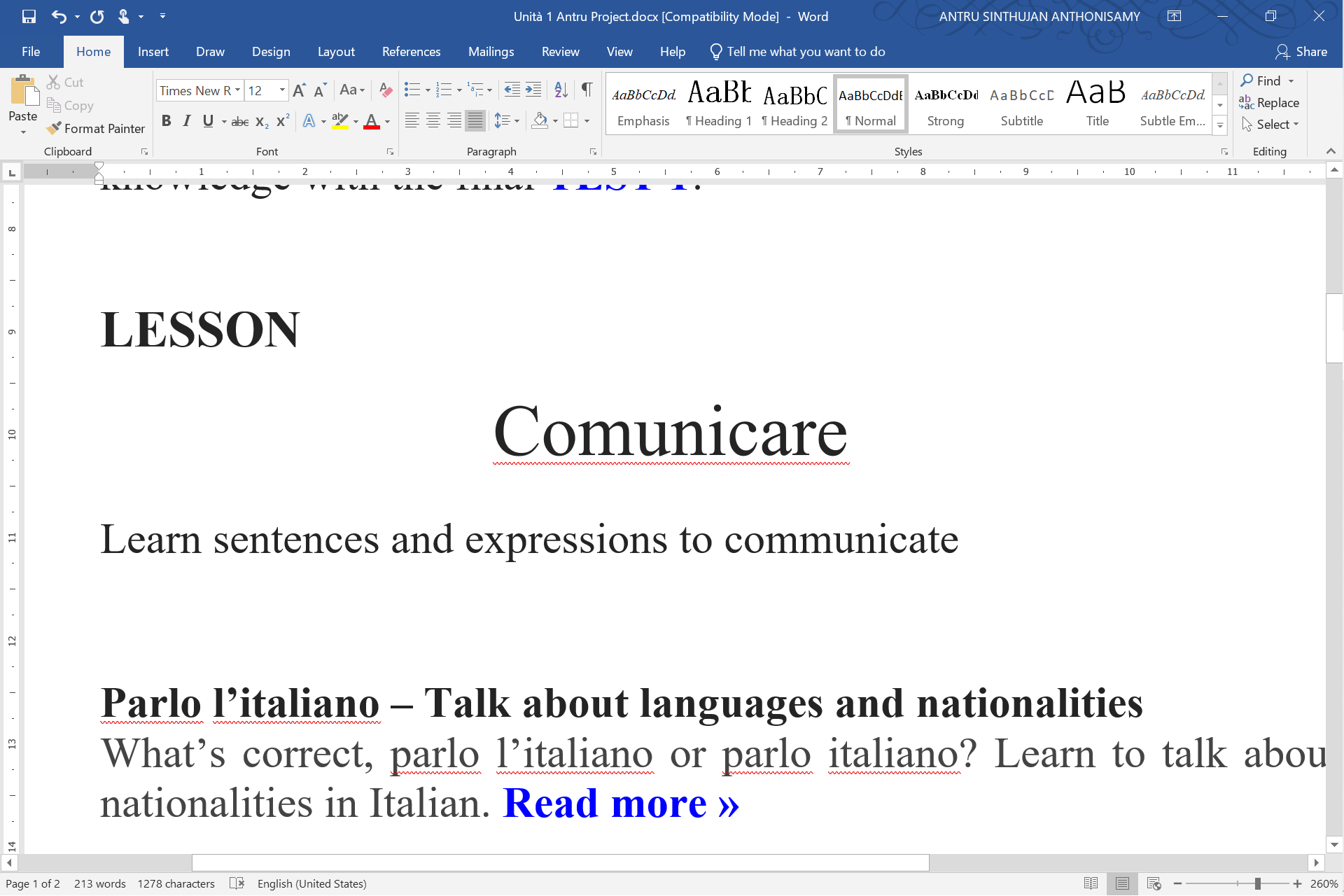
Learn sentences and expressions to communicate
Parlo l’italiano – Talk about languages and nationalities
What’s correct, parlo l’italiano or parlo italiano? Learn to talk about languages and nationalities in Italian.
Corso d'italiano A1.1, Unità 1
How many languages do you speak? Do you say parlo l’italiano or parlo italiano? What is your nationality? Let’s talk about languages and nationalities.
Dialogue
|
|
Scotty, Where are you from? |
|
|
I’m from Stockholm. |
|
|
Ah, you’re Swedish! You speak Italian well. |
|
|
Thank you! My dad is Swedish, my mom is Italian. |
|
|
So you speak Swedish and Italian? |
Talking about languages
Parlo l’italiano or parlo italiano?
Che lingue parli?
Parlo l’italiano e l’inglese.
|
|
|
|
|
|
|
|
|
|
|
|
|
|
|
Talking about nationalities
Sei inglese?
No, sono spagnolo, di Madrid.
The word for the nationality is the same as the word for the language. But pay attention: you have to adapt the ending to gender (masculine/feminine) and number (singular/plural). The masculine plural is used for men or a mixed group of men and women. The feminine plural form is used only for women.
Nationalities in -o
Nationality words ending with -o like italiano, tedesco and spagnolo have 4 forms:
|
Singular |
Plural |
|
|
Masculine |
italiano |
italiani |
|
Feminine |
italiana |
italiane |
Nationalities in -e
Nationality words ending with -e like francese, inglese and svedese have only 2 forms that only distinguish singular and plural.
|
Singular |
Plural |
|
|
masculine / feminine |
francese |
francesi |
Say your age and phone number
Corso d'italiano A1.1, Unità 1
If you have already learned the numbers, you can now say your age and your phone number in Italian.
Say your age and phone number in Italian
Quanti anni hai?
In Italian, you use the verb avere to talk about your age. So in Italian actually you have years and you ask how many years one has.
|
|
|
|
|
|
|
|
|
|
|
|
|
Qual è il tuo numero di telefono?
The phone number is in Italian il numero di telefono. You can also differ between numero di casa home phone number and il numero di cellulare mobile phone number.
|
|
|
|
|
|
|
|
|
|
|
|
|
|
My home phone number is … |
|
|
|
My mobile phone number is … |
Qual è il Suo numero di telefono?
When you tell your phone number, you can group the numbers together or you can tell every single number, as you prefer.
|
|
|
|
347 1321190 |
|
Tu, Lei and voi: The polite form
Corso d'italiano A1.1, Unità 1
Ciao, come stai? If you are among friends you’ll use the Tu form, that is the informal form, but if you speak to an unknown person you should better use the Lei form, that is the polite form. You won’t be rude, don’t you? Learn the polite form in Italian!
Subject pronouns and the polite form
In Italian the feminine 3rd person singular lei she is the person used as polite form – regardless of whether the person you’re talking to is a man or a woman. The polite Lei is usually capitalized, but this is not a must.
If you speak to many people, there is not a special polite form: just use voi. You don’t need to capitalize it.
|
io |
I |
|
|
informal (sg.) |
tu |
informal you |
|
formal (sg.) |
lui | lei | Lei |
he | she | formal you |
|
noi |
we |
|
|
formal | informal (pl.) |
voi |
you all |
|
loro |
they |
In the following table you can see how the formal and informal forms differ in Italian through the question Come stai? How are you?
|
ONE PERSON |
MORE PERSONS |
|
|
INFORMAL |
Come stai? (tu) |
Come state? (voi) |
|
FORMAL |
Come sta? (Lei) |
Come state? (voi) |
Alternative polite forms
Lei vs. Voi
Voi can be used as polite form to speak to a single person instead of Lei. This use of voi was very common in the past, but nowadays it has been substituted by Lei. Therefore, to use voi instead of Lei to speak to one person is quite old-fashioned, but sometimes you can still hear it.
Voi vs. Loro
Loro can be used as polite form to speak to many people instead of voi, but it’s extremely formal and almost exclusively confined to bureaucratic contexts.
Useful questions
Here you can find a few useful questions and expressions we have learned in this Unit 1 in their TU, LEI and VOI variants.
|
TU |
LEI |
VOI |
|
|
Come stai? |
Come sta? |
Come state? |
How are you? |
|
Come ti chiami? |
Come si chiama? |
Come vi chiamate? |
What’s your name? |
|
Dove abiti? |
Dove abita? |
Dove abitate? |
Where do you live? |
|
Di dove sei? |
Di dov’è? |
Di dove siete? |
Where are you from? |
|
Sei inglese? |
È inglese? |
Siete inglesi? |
Are you English? |
|
Quanti anni hai? |
Quanti anni ha? |
Quanti anni avete? |
How old are you? |
|
Quali lingue parli? |
Quali lingue parla? |
Quali lingue parlate? |
What languages do you speak? |
Mi piace! I like in Italian
Corso d'italiano A1.1, Unità 1
Mi piace l’Italia! To say I like in Italian you should use either mi piace or mi piacciono, depending on what follows. Learn the rule of mi piace and mi piacciono and how to have a small conversation about preferences.
Dialogue
|
|
Scotty, do you like Italy? |
|
|
Yes, I like it very much! I like the cities, the culture, the music, the cuisine,… |
|
|
|
|
|
|
|
|
|
I like in Italian
I like is mi piace or mi piacciono, depending on what follows. Let’s learn the rule:
Mi piace, mi piacciono
Mi piace l’Italia.
To say that you like something or doing something, you use mi piace.
|
+ singular noun |
Mi piace l’Italia. |
I like Italy. |
|
+ verb |
Mi piace viaggiare. |
I like traveling. |
|
+ list of verbs |
Mi piace leggere e guardare la TV. |
I like reading and watching TV. |
Mi piacciono le città italiane.
To say that you like many things, you use mi piacciono.
|
+ plural noun |
Mi piacciono le città italiane. |
I like Italian cities. |
|
+ list of nouns |
Mi piacciono il gelato e la pizza. |
I like ice-cream and pizza. |
If you don’t like something, you put non bevor mi.
|
|
I don’t like doing sport. |
|
|
I don’t like bananas. |
Mi piace molto
Mi piace molto la cucina italiana.
You can like something a lot or not at all. Look at the following possibilities:
|
|
I like it very very much |
|
|
I like it very much |
|
|
I don’t like it very much |
|
|
I don’t like it at all |
Ti piace?
If you directly ask if your conversation partner like something, you can ask your question as following:
|
Informal |
Formal |
Answer |
|
Ti piace viaggiare? |
Le piace viaggiare? |
Sì, mi piace. |
|
No, non mi piace. |
||
|
Ti piacciono le città italiane? |
Le piacciono le città italiane? |
Sì, mi piacciono. |
|
No, non mi piacciono. |
If you say that you like something and you want to ask if (s)he like it too, you should use the stressed pronouns a me / a te / a Lei instead of mi / ti / Le since you are doing a comparison. You use these pronouns also to say that you (don’t) like it too or that you, unlike your conversation partner, do or don’t like it.
|
Informal |
Formal |
SAME |
DIFFERENT |
|
A me piace fare sport, e a te? |
A me piace fare sport, e a Lei? |
Anche a me |
A me no |
|
A me non piace il caffè, e a te? |
A me non piace il caffè, e a Lei? |
Neanche a me |
A me si |
Introduce yourself in Italian
Corso d'italiano A1.1, Unità 1
Introduce yourself in Italian: Learn your first sentences to introduce yourself in Italian. Your name, where you live, where you are from.
Introduce yourself in Italian
Dialog: Piacere!
|
|
Hello! My name is Bruno, and yours? |
|
|
My name is Scotty. Nice to meet you! |
|
|
Where are you from? |
|
|
I am from Stockholm. |
|
|
Ah, you are Swedish! |
|
|
Yes, but now I live in Italy, in San Candido. |
|
|
I live in San Candido, too! |
Introduce yourself in Italian
Let’s learn to answer three simple questions in Italian: 1) What is your name? 2) Where do you live? 3) Where are you from?
1. Come ti chiami?
Come ti chiami?
Mi chiamo Scotty.
The verb you need in Italian to say your name is the reflexive verb chiamarsi (literally, “to call oneself”).
Another way is to introduce oneself with the verb essere, to be.
|
|
My name is Scotty. |
|
|
I’m Scotty. |
2. Dove abiti?
Dove abiti?
– Abito a Roma.
– Abito in Italia.
To tell where you live, use the verb abitare and the preposition A or IN for the city or the country, respectively.
|
|
I live in Rom. |
|
|
I live in Italy. |
If you live in a small town that your listener probably doesn’t know, you might say:
|
|
I live in Caldaro, near Bolzano. |
|
|
I live in a small village near Berlin. |
Instead of the verb abitare live, reside (where your house is), one could also use the verb vivere live (live in a general sense).
|
|
I live/reside in Milan. |
|
|
I live in Milan. |
3. Di dove sei?
Di dove sei?
Sono di Vienna.
To say where you are from, simply say your nationality or use the verb essere and the preposition DI followed by your hometown.
|
|
I am Austrian (male / female). |
|
|
I am from Vienna. |
|
|
I come from Vienna, but I live in Munich now. |
With this expression you can’t say which is your home country, so you can’t say Sono di Austria. For that you just say your nationality or you use another expression, vengo dall’Austria. Learn this expression in our lesson Sono di, vengo da – Where are you from in Italian.
Buongiorno! Greetings in Italian
Corso d'italiano A1.1, Unità 1
What is the most important thing you should learn before you go to Italy? Of course to greet and say goodbye! You don’t want to be rude, do you? Learn useful greetings in Italian.
Greetings in Italian
1. Greeting formulas
|
Meeting greetings |
Formality |
When? |
|
|
Ciao! |
informal |
anytime |
Hi! Hello! |
|
Salve! |
formal |
anytime |
Hello! |
|
Buon giorno! |
formal | informal |
morning, afternoon, |
Good morning! | Hello! |
|
Buona sera! |
formal |
afternoon, evening |
Good evening! |
|
Buona notte! |
formal | informal |
Night before bedtime |
Good night! |
The time at which you start saying buona sera depends on the region. The further south, the earlier. In the north, for example, buona sera is heard from about 5 p.m., in the south already after lunch.
The buon greetings can be written as one word or separately: buongiorno or buon giorno; buonasera or buona sera; buonanotte or buona notte.
2. Nice to meet you
– Piacere, Valentina.
– Piacere, Federico.
Piacere is what you say when you meet someone for the first time, usually while shaking hands. You could also add a few words:
|
Piacere |
formal | informal |
It’s a pleasure |
|
Piacere di conoscerti |
informell |
Pleased to meet you. |
|
Piacere di conoscerla |
formal |
Pleased to meet you |
If you just met someone and then leave, you can say:
– È stato un piacere conoscerti.
– Anche per me!
|
|
informal |
It was a pleasure meeting you |
|
|
formal |
It was a pleasure meeting you |
|
|
formal | informal |
For me, too |
3. How are you?
– Ciao Emma, come stai?
– Bene, grazie! E tu?
There are a few ways to ask how someone is doing and respond. Let’s get to know some of the most common ones:
|
Come stai? |
informal |
How are you? |
|
Come sta? |
formal |
How are you? |
|
Come va? |
formal | informal |
How’s it going? |
Answers
|
Bene, grazie! |
Good, thank you! |
|
Benissimo |
Very good |
|
Tutto a posto |
Everything good |
|
Non male |
Not bad |
|
Così così |
So so |
|
Male |
Bad |
5. See you soon
– Ciao Emma, a presto!
– Ci vediamo!
When you say goodbye, you could also say something other than goodbye. Here you can find some common expressions:
|
Buona giornata! |
Have a nice day! |
|
Buona serata! |
Have a nice evening! |
|
A presto! |
See you soon! |
|
A dopo! |
See you later! |
|
A domani! |
See you tomorrow! |
|
Ci vediamo! |
See you around! |
Answers
|
Grazie, altrettanto! |
formal | informal |
Thank you likewise! |
|
Grazie, anche a te! |
informal |
Thank you, you too! |
|
Grazie, anche a Lei! |
formal |
Thank you, you too! |
Essere and avere – To be and to have in Italian
Grammatica
The Italian verbs essere to be and avere to have are surely the most important verbs to know when you learn Italian. Italian essere and avere – to be and to have.
Italina essere and avere – to be and to have
Essere
|
io |
sono |
I am |
|
tu |
sei |
you are |
|
lui | lei | Lei |
è |
he | she is | you are (polite form) |
|
noi |
siamo |
we are |
|
voi |
siete |
you (all) are |
|
loro |
sono |
they are |
You use the verb essere for many things, for example to tell:
|
who you are |
sono Jane |
I’m Jane |
|
your nationality |
sono inglese |
I’m English |
|
your home town |
sono di Londra |
I’m from London |
|
your profession |
sono una segretaria |
I’m a secretary |
|
your mood |
sono felice | triste |
I’m happy | sad |
Avere
|
io |
ho |
I have |
|
tu |
hai |
you have |
|
lui | lei | Lei |
ha |
he | she has | you have (polite form) |
|
noi |
abbiamo |
we have |
|
voi |
avete |
you (all) have |
|
loro |
hanno |
they have |
You use the verb avere for many things, for example to tell:
|
your age |
ho 30 anni |
I’m 30 years old |
|
about things or animals you have |
ho un cane | una casa |
I’ve a dog | a house |
|
about your family |
ho un figlio | una figlia |
I’ve a son | a daughter |
|
expressions like be hungry or thirsty |
ho fame | sete |
I’m hungry | thirsty |
Definite articles
Corso d'italiano A1.1, Grammatica, Unità 1
Definite articles in Italian vary depending on gender (masculine and feminine), number (singular and plural) and the beginning letter of the following word. It may be sound a bit complicated, but you’ll surely learn the definite articles pretty quickly. Let’s learn together the rules of the definite article (it. l’articolo determinativo) in Italian!
Definite articles in Italian
The definite article is used – as in English – to refer back to something known or already mentioned. In Italian, nouns and articles have two genders, masculine and feminine, and they can be either singular or plural. For example, il cane the dog is masculine singular. For the definite articles it is also important to see which is the first letter of the following word. Have a look at the table with the rules. In il cane it is a consonant. Take a look at the table with the rules.
Masculine
The masculine has four articles: il and lo for the singular, i and gli for the plural. Bevor vowels, the o of lo is dropped, becoming l’.
|
Singular |
Plural |
||
|
before consonant |
il cane |
i cani |
dog |
|
before vowel |
l’amico |
gli amici |
friend |
|
before s+consonant |
lo stivale |
gli stivali |
boot |
Besides s+consonant and z, there are further peculiar cases: y (lo yogurt), x (lo xilofono), gn (lo gnomo), ps (lo psicologo).
Feminine
The feminine has two articles: la for the singular and le for the plural. The a of la is dropped before vowels, becoming l’.
|
Singular |
Plural |
||
|
before consonant |
la mucca |
le mucche |
cow |
|
before vowel |
l’isola |
le isole |
island |
Masculine and feminine
Corso d'italiano A1.1, Grammatica, Unità 1
In Italian there are only two genders, masculine and feminine, and three nouns classes: O, A and E nouns, like gatto, casa and cane. Learn the Italian masculine and feminine, the three Italian noun classes and some exceptions like papa and foto.
Masculine and feminine in Italian
O and A nouns
The noun classes O and A are pretty straightforward: O nouns are masculine, like il libro or il gatto, A nouns are feminine, like la scuola or la casa.
|
O |
il libro |
book |
masculine |
|
A |
la scuola |
school |
feminine |
Here you can find some sample words for masculine and feminine words ending with O and A:
|
O – MASCULINE |
A – FEMININE |
||
|
il gatto |
cat |
la luna |
moon |
|
il topo |
mouse |
la stella |
star |
|
il ragazzo |
boy |
la ragazza |
girl |
|
il nonno |
grandfather |
la nonna |
grandmother |
|
il tavolo |
table |
la sedia |
chair |
|
l’albero |
tree |
la scuola |
school |
|
il bosco |
forest |
la borsa |
bag |
|
il pomeriggio |
afternoon |
la sera |
evening |
|
il vicino |
neighbor (man) |
la vicina |
neighbor (woman) |
Exceptions
masculine nouns ending with A
If there is a rule, there are also exceptions… In fact there are a few A nouns that are masculine, like:
- il problema problem
- il turista tourist
- l’autista driver
- il papà dad
- il papa pope
A dad and the pope are two very different people, so it’s important to distinguish them properly when speaking. Listen to the difference:
Feminine nouns ending with O
There are also O nouns that are feminine, like:
- la mano hand
- la foto photo
- la moto motorcycle
- l’auto car
- la radio radio
Except for the first one, the others are abbreviations of words actually ending with A: la fotografia, la motocicletta, l’automobile, la radiofonia.
E nouns
Besides O and A nouns, there are another noun class in Italian, that is the class of nouns ending with E. Unfortunately in this case you cannot tell if it is masculine or feminine just by looking at it! So you have to learn it by heart. In the following table you can find some useful words that end with E:
|
MASCULINE |
FEMININE |
||
|
il padre |
father |
la madre |
mother |
|
il fiore |
flower |
la volpe |
fox |
|
il cane |
dog |
la carne |
meat |
|
il pesce |
fish |
la notte |
night |
|
il sole |
sun |
la tigre |
tiger |
|
il giornale |
newspaper |
la luce |
light |
|
il latte |
milk |
la soluzione |
solution |
|
il pane |
bread |
la pelle |
skin |
|
l’animale |
animal |
la neve |
snow |
|
il bicchiere |
glass |
la nave |
ship |
There are also some words that end with a consonant (usually foreign words), like il bar or il film, and they are usually masculine.
Italian subject pronouns
- Corso d'italiano A1.1, Grammatica, Unità 1
Italian subject pronouns. I pronomi soggetto.
What subject pronouns are there in Italian? Let’s get to know them.
Italian subject pronouns
As in English, the verbs are conjugated for different “persons”, e.g. I, you, he, etc. These persons are called subject pronouns and they stand for the subject, i.e. the person who performs the action. Italian has the following subject pronouns:
|
1st person singular |
io |
I |
|
2nd person singular |
tu |
you (one person) |
|
3rd person singular |
lui, lei |
he, she |
|
1st person plural |
noi |
we |
|
2nd person plural |
voi |
you (two or more people) |
|
3rd person plural |
loro |
they |
The subject pronouns are usually omitted in Italian, as you can tell from the verb which person is being referred to. However, if they are used, they emphasize the person, e.g. in introductions or juxtapositions:
- Abito a Berlino. I live in Berlin.
- Lui è Roberto, lei è Emma. He is Roberto, she is Emma.
Polite form
In Italian, the 3rd person singular Lei is used for formal address when speaking to one person, and the 2nd person plural Voi is used for addressing multiple people formally. When these pronouns are used for formal address, they are capitalized.
- E Lei, signor Rossi, dove abita?And you, Mr. Rossi, where do you live?
- E Voi, signori Rossi, dove abitate? And you, Mrs. and Mr. Rossi, where do you live?
|
one person |
several persons |
|
|
informal |
tu |
voi |
|
formal |
Lei |
Voi |
The 2nd person plural voi/Voi is therefore always used for several people, whether formal or informal. A distinction between formal and informal is only made in the singular between tu and Lei.
To deepen your understanding of the topic, read our article about the polite form.
The structure of Italian sentences
Corso d'italiano A1.1, Grammatica, Unità 1
Learn the basic structure of Italian sentences to make statements, yes/no questions, open questions and negative sentences.
Structure of Italian sentences
A basic Italian sentence has a SVO order, that is first the Subject, then the Verb and then the Object. In order to ask a simply yes/no question, you don’t need to modify this order. You just need a question mark or a question intonation. The order is changed if you ask an open question, where the question pronoun has to be placed first. In a negative sentence the negation word non is placed before the verb.
Look at the following examples with the sentence Bruno abita a Bolzano Bruno lives in Bolzano.
|
1 |
2 |
3 |
ANSWER |
||
|
Statement |
Bruno |
abita |
a Bolzano. |
||
|
Yes/No Question |
Bruno |
abita |
a Bolzano? |
– Sì/No. |
|
|
Open Question |
Dove |
abita |
Bruno? |
– A Bolzano. |
|
|
Negation |
Bruno |
non |
abita |
a Roma. |
No and non
No means no and it’s used as answer to yes/no question. Non is used to negate a verb and is placed before this.
|
Bruno abita a Roma? – No. |
Does Bruno live in Rom? – No. |
|
Bruno non abita a Roma. |
Bruno doesn’t live in Rom. |
Empty subject position
If your subject is represented by a pronoun, like io or noi, you don’t need to say it explicitly, so you can leave the subject position empty.
|
Ø |
Abito |
a Milano. |
I live in Milan. |
|
|
Ø |
Non |
abitiamo |
a Berlino. |
We don’t live in Berlin. |
You can learn more about subject pronouns in our lesson Italian subject pronouns.
If you want to know more about questions and questions pronouns in Italian, read our lesson Questions and questions pronouns.











